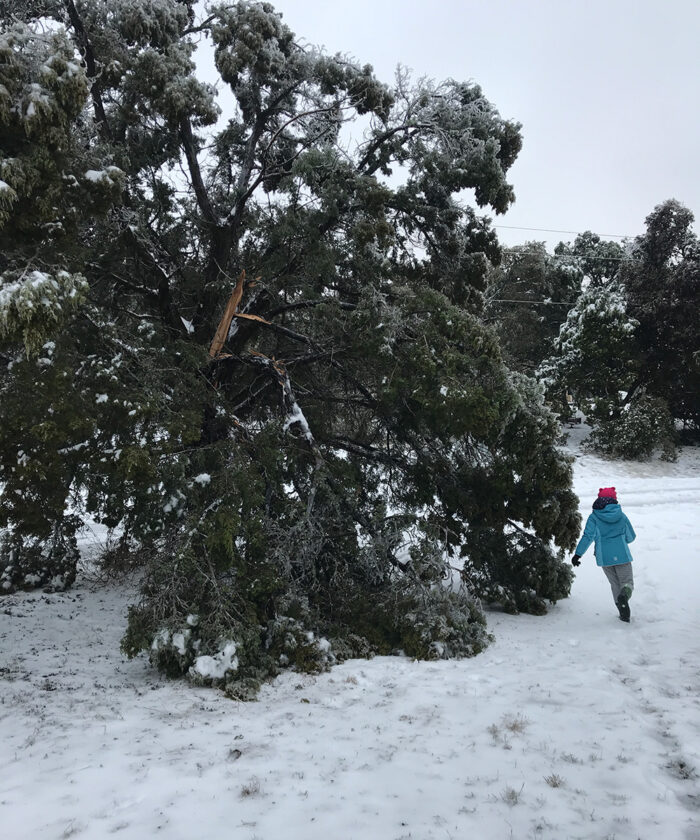
Your electricity is back on, you’re no longer flushing toilets with melted snow, and it’s no longer 15 degrees colder than the coldest day of your life. Congratulations—you’ve made it through a record-breaking, once-in-a-lifetime winter storm! Many of us in the Southern Plains are now wondering, “What’s going to happen to my garden?” Here are a few tips for helping your garden recover from a severe winter storm.
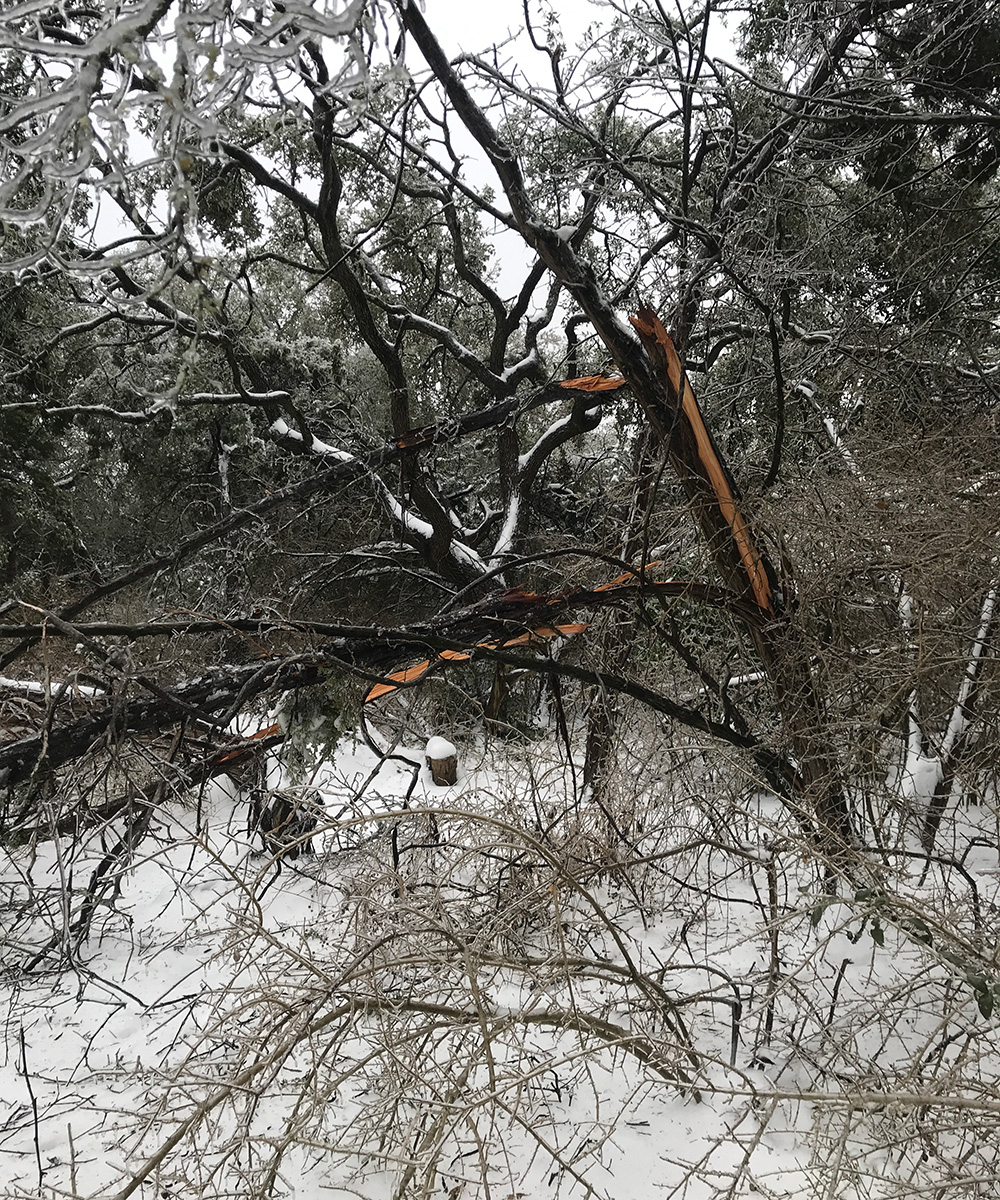
Trees and shrubs
Evergreen trees may defoliate after a severe storm, but they will leaf out again. Be patient with them. Many trees and shrubs suffered splintering breaks when ice-laden branches became too heavy. Instead of leaving the splintered stubs on your trees, make sure to go back and prune them appropriately. Apply wound spray to broken and pruned oaks (Quercus spp. and cvs., Zones 4–10) to prevent oak wilt. Focus on structural pruning this year, striving to make your trees stronger and more structurally sound. Many trees will need years to recover from storm damage, and careful structural pruning will help. Avoid cosmetic-only pruning for now if you can. You can also pamper your trees by making sure they are adequately mulched. This would be a great year to hire an ISA-certified arborist if possible.
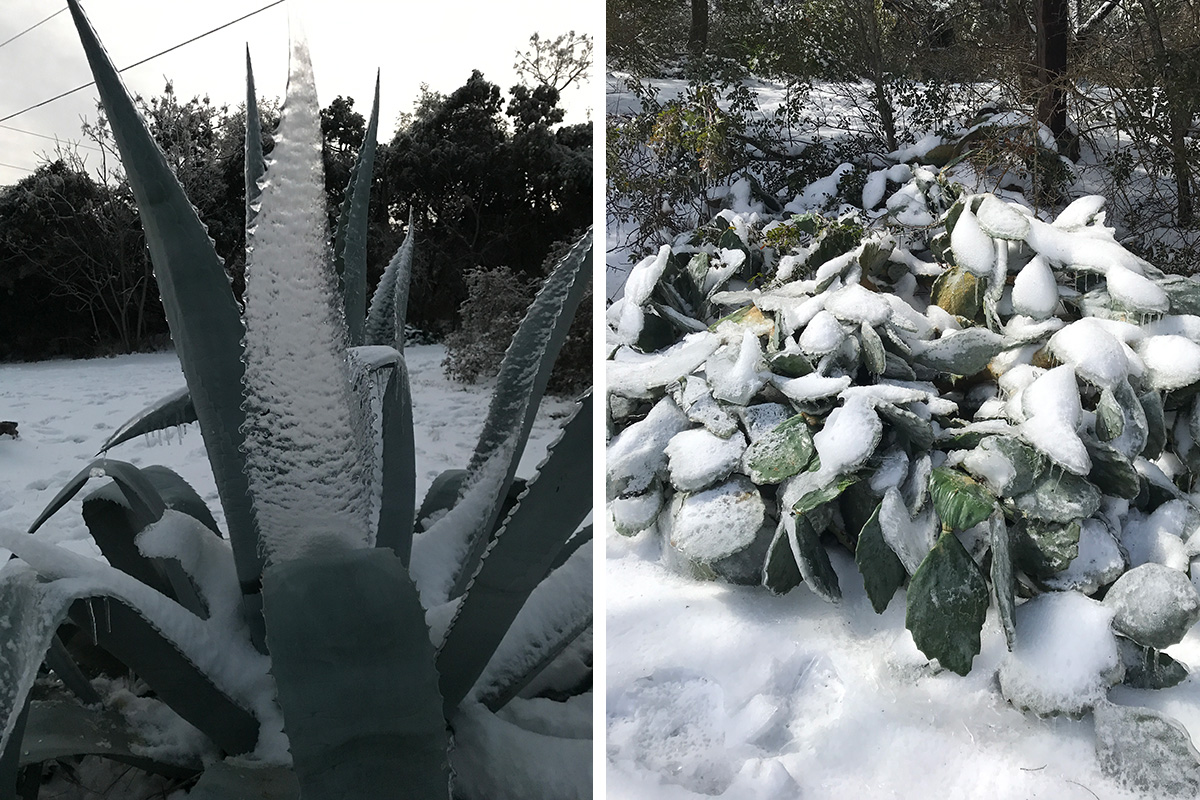
Perennials
Native perennial plants are masters at handling winter weather that is normal for their region. With extreme winter storms that bring record-breaking low temperatures, we are bound to see some loss. However, don’t pull up and throw out all of your perennials that look bad after a storm. Scratch the bark or stem with a fingernail and see if there is green underneath. If there is, that’s a good sign that the plant is still alive. Cut back the ruined tops of perennials that froze hard, but leave their roots intact underground and watch to see if they come back from the roots. Many will! Groom woody perennials well this year, removing dead and damaged tissue. I feed liquid seaweed to stressed plants, and now would be a good time to apply it to our winter-stricken perennials. However, do not fertilize until after all chance of frost is past.
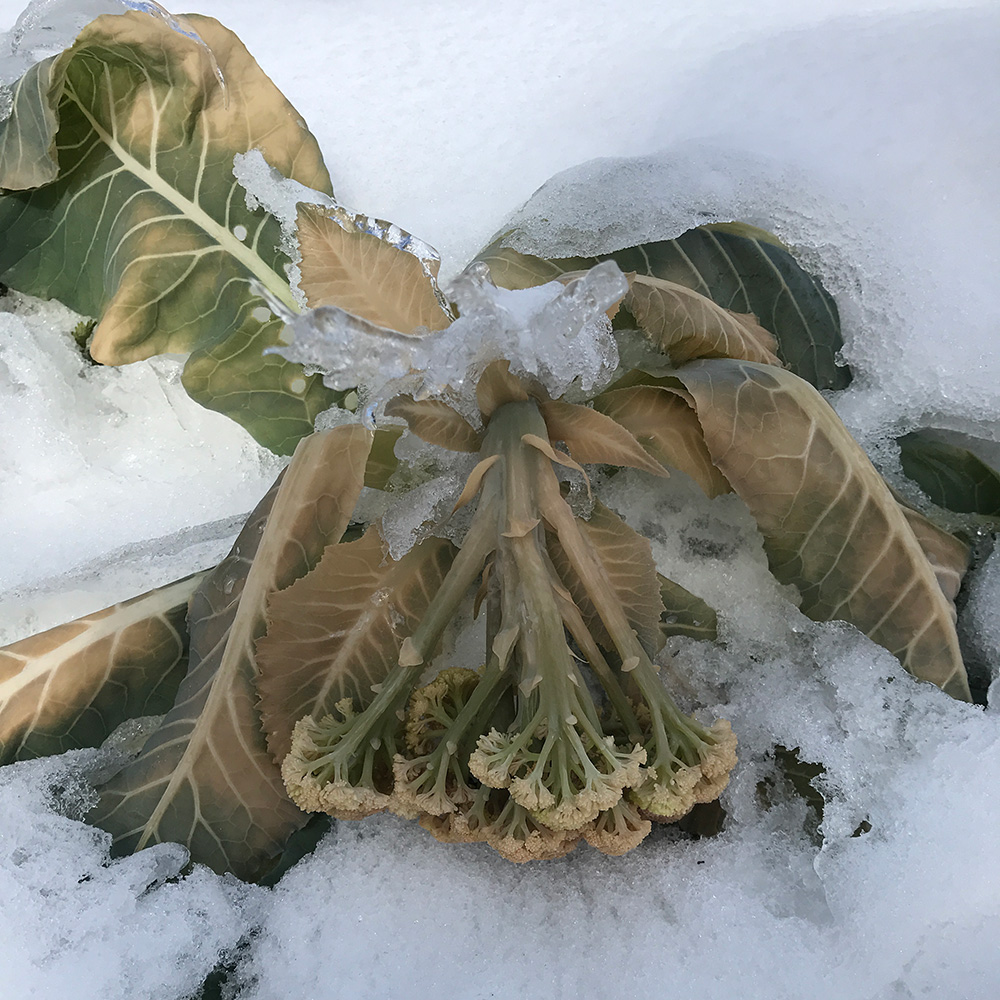
Annuals and vegetables
Tender annuals likely didn’t weather the storm. However, late winter cold snaps can help clear out the garden for spring planting! Your winter vegetable garden is likely full of hardy annual vegetables such as kale, collards, cauliflower, broccoli, Swiss chard, and Asian greens. Many of these will survive a storm, even one with substantial snowfall. Some collard varieties (such as ‘Vates’, which is superb) are hardy down to 0°F, with the other brassicas not too far behind. My advice on winter greens that have weathered a storm is not to yank them out and throw them on the compost pile just yet. If the tops are ruined, simply cut them off at the ground and see what resprouts. You may have time for another round of Swiss chard, collards, and other cool-season veggies. If you’re already close to spring in your area and don’t have time for another round, feel free to yank them and compost. I’d apply liquid seaweed to any annuals or vegetables that you are trying to nurse back to health.
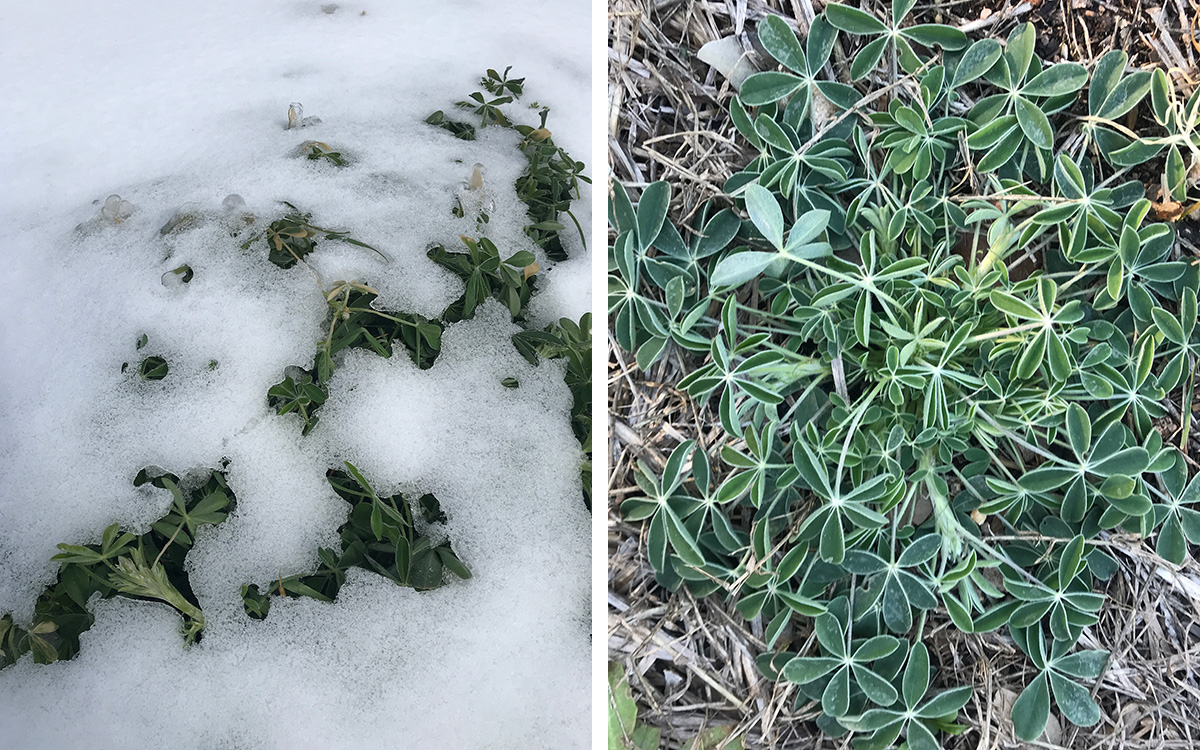
Wildflowers
Because many wildflower seeds need cold stratification in order to germinate, severe winter weather may actually increase the number of wildflowers we see this year! We may also see a showing of rarer native wildflowers whose seeds have been dormant in the soil and will now be awakened by this cold snap. Many native wildflowers are also able to handle extreme (for our region) cold even as established plants. The native big bluebonnets (Lupinus havardii, annual) in my garden look just fine after a trip down to 3°F. Pay attention to which wildflowers you don’t see this year (in spring, summer, and fall), and consider sowing seed next year for those that are missing or make a weak showing. The dividends of that will pay off in the future.
Best of luck with your poststorm garden! The year after a really big winter storm is an excellent opportunity for us gardeners to pay close attention to what lived, what struggled, and what died. This information can inform our future plant selections and garden designs and help to make our gardens more resilient and more successful in the future.
—Karen Beaty is a forestry specialist at the city of Austin’s Wildland Conservation Division.


















Comments
Your blog is quite nice. High winds can scatter dead limbs, foliage, and even entire trees since your backyard trees are vulnerable to destructive storms. Homeowners whose residences are surrounded by trees are now in danger. You won't have to worry about dealing with the Storm Damage cleanup alone thanks to our Columbia Tree Service. Our tree specialists can promptly cut and remove fallen trees and limbs to repair both residential and commercial property.
Log in or create an account to post a comment.
Sign up Log in